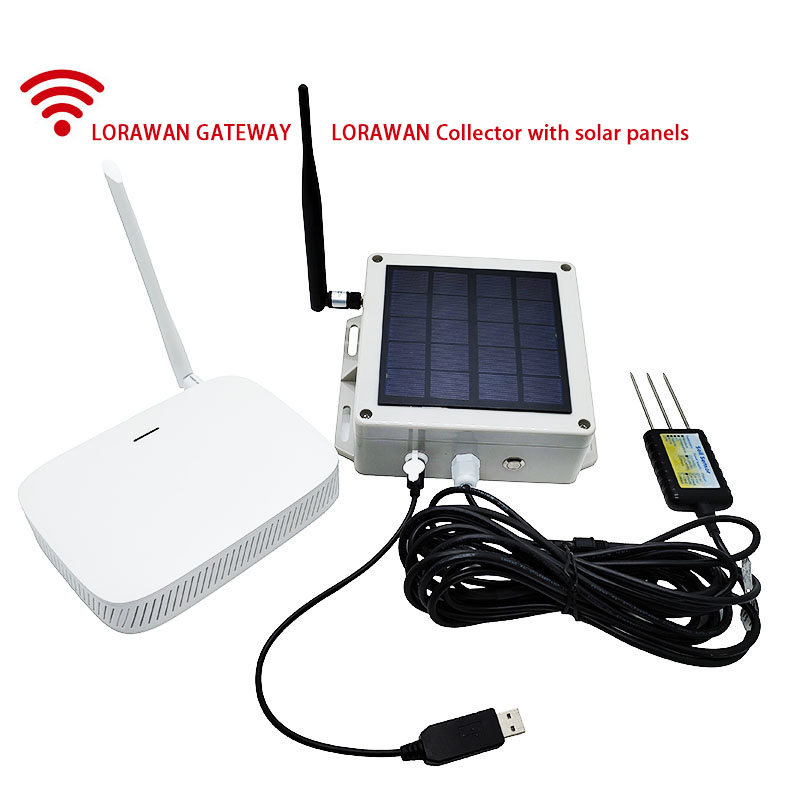Shuohao Cai, a doctoral student in soil science, places a sensor rod with a multifunction sensor sticker that allows measurements at different depths into the soil at the University of Wisconsin-Madison Hancock Agricultural Research Station.
MADISON — University of Wisconsin-Madison engineers have developed low-cost sensors that can provide continuous, real-time monitoring of nitrate in common Wisconsin soil types. These printed electrochemical sensors can help farmers make more informed nutrient management decisions and realize economic benefits.
“Our sensors can give farmers a better understanding of the nutritional status of their soil and the amount of nitrate available to their plants, helping them decide more accurately how much fertilizer they actually need,” said Joseph Andrews, assistant professor at Harvard University. The study was led by the School of Mechanical Engineering at the University of Wisconsin-Madison. “If they can reduce the amount of fertilizer they buy, the cost savings could be significant for larger farms.”
Nitrates are an essential nutrient for crop growth, but excess nitrates can leach from the soil and enter groundwater. This type of contamination is harmful to people who drink contaminated well water and is harmful to the environment. The researchers’ new sensor could also be used as an agricultural research tool to monitor nitrate leaching and help develop best practices for mitigating its harmful effects.
Current methods for monitoring soil nitrate are labor-intensive, expensive, and do not provide real-time data. That’s why printed electronics expert Andrews and his team set out to create a better, less expensive solution.
In this project, the researchers used an inkjet printing process to create a potentiometric sensor, a type of thin-film electrochemical sensor. Potentiometric sensors are often used to accurately measure nitrate in liquid solutions. However, these sensors are generally not suitable for use in soil environments because large soil particles can scratch the sensors and prevent accurate measurements.
“The main challenge we were trying to solve was to find a way to get these electrochemical sensors to work properly in harsh soil conditions and accurately detect nitrate ions,” Andrews said.
The team’s solution was to place a layer of polyvinylidene fluoride on the sensor. According to Andrews, this material has two key characteristics. First, it has very tiny pores, about 400 nanometers in size, which allow nitrate ions to pass through while blocking soil particles. Secondly, it is hydrophilic, that is, it attracts water and absorbs it like a sponge.
“So any nitrate-rich water will preferentially seep into our sensors, which is really important because soil is also like a sponge and you’re going to lose the battle in terms of moisture getting into the sensor if you can’t get the same water absorption. Soil potential,” Andrews said. “These properties of the polyvinylidene fluoride layer allow us to extract nitrate-rich water, deliver it to the sensor surface and accurately detect nitrate.”
The researchers detailed their progress in a paper published in March 2024 in the journal Advanced Materials Technology.
The team tested their sensor on two different soil types associated with Wisconsin—sandy soils, common in north-central parts of the state, and silty loams, common in southwestern Wisconsin—and found that the sensors produced accurate results.
The researchers are now integrating their nitrate sensor into a multifunctional sensor system they call a “sensor sticker,” in which three different types of sensors are mounted on a flexible plastic surface using an adhesive backing. The stickers also contain humidity and temperature sensors.
Researchers will attach several sensory stickers to a post, place them at different heights, and then bury the post in soil. This setup allowed them to take measurements at different soil depths.
“By measuring nitrate, moisture and temperature at different depths, we can now quantify the nitrate leaching process and understand how nitrate moves through the soil, which was not possible before,” Andrews said.
In the summer of 2024, the researchers plan to place 30 sensor rods in soil at the Hancock Agricultural Research Station and the Arlington Agricultural Research Station at the University of Wisconsin-Madison to further test the sensor.
Post time: Jul-09-2024


